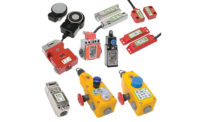Compressed air can be lethal
Workplace injuries, often created by misuse, can be devastating

OSHA standard 1910.242(b) relating to hand and portable powered tools and other hand-held equipment is clear on using compressed air for cleaning. “Compressed air shall not be used for cleaning purposes except where reduced to less than 30 psi and then only with effective chip guarding and personal protective equipment.” Nowhere does the standard state that any part of the body can be cleaned with compressed air, which is quite dangerous.
Using compressed air for other than its primary purpose creates a workplace hazard. Entering through the mouth or belly, it can rupture the stomach, intestines and lungs. Entering the bloodstream, it can cause death due to embolism, heart attack or stroke. It is rare to die from compressed air injection into the body; still, any body part inflated with air can be extremely painful.
Eye injuries are a common result of compressed air misuse. It doesn’t take much air pressure to create impressive debris velocities. A spitball shot through a straw can hit a teacher in the front of the class while propelled by the troublemaker with well under 2 psi of pressure. It doesn’t take much more air pressure than that to propel objects, metal chips or other debris through the air at hundreds of feet per second (Figure 1).
Watch out for misuse
There are many ways to misuse compressed air. For example, 90 psi factory air is provided to operate a handheld pneumatic grinder. However, the pneumatic quick-disconnect fitting allows the operator to remove the grinder and attach a manually-operated air nozzle. At the end of the shift, the operator connects the nozzle and blasts debris off the work area and his or her clothing. The operator may feel compelled to clean a milling machine covered in metal shavings or a surface covered in cement dust, but a high-pressure air blast can make chips and debris travel at dangerous speeds. Propelled by 90 psi air flow, the flying particles can injure someone many feet away. The air pressure can also bounce the material back at the air nozzle operator.
Misuse often continues when the operator cleans himself off using the compressed air. This should never be done because the air nozzle may contact the skin. At common working pressures of 60 to 100 psi, air can be injecting into the body with catastrophic results.
Using compressed air to cool off is another misuse with the same risks and hazards as using it for cleaning. At common work pressures, a compressed air blast can rupture an eardrum from several inches away.
Cleaning with vacuum
A vacuum or a full-body cleaning system should be used to safely remove dust and debris from clothing and equipment without any possible eye hazards.
If compressed air must be used for cleaning equipment, the pressure must be below 30 psi, even if the nozzle is blocked, and effective chip guarding must be in place. To control the pressure, a separate regulator and hose, and a safety nozzle with a tip and cone, should be added to keep the pressure within safe limits (Figure 2).
Also, wear proper PPE including safety glasses and/or a face shield. Other operators in the area must also wear safety glasses. Barriers, baffles or screens (chip guards) probably will be needed to protect personnel.
Looking for a reprint of this article?
From high-res PDFs to custom plaques, order your copy today!









